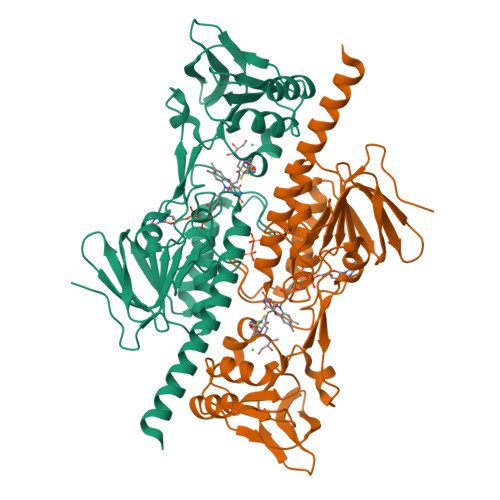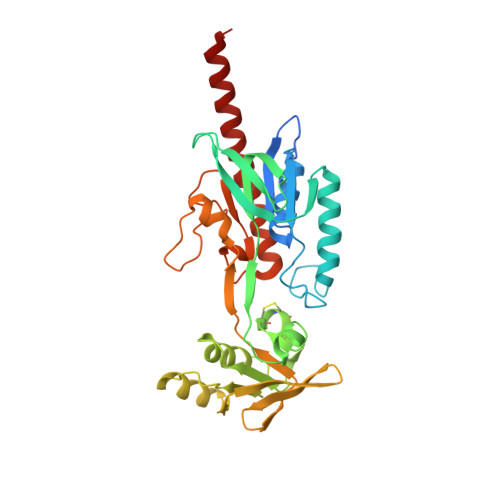Flavoenzyme-Catalyzed Formation of Disulfide Bonds in Natural Products
Scharf, D.H., Groll, M., Habel, A., Heinekamp, T., Hertweck, C., Brakhage, A.A., Huber, E.M.(2014) Angew Chem Int Ed Engl 53: 2221-2224
- PubMed: 24446392
- DOI: https://doi.org/10.1002/anie.201309302
- Primary Citation of Related Structures:
4NTC, 4NTD, 4NTE - PubMed Abstract:
Nature provides a rich source of compounds with diverse chemical structures and biological activities, among them, sulfur-containing metabolites from bacteria and fungi. Some of these compounds bear a disulfide moiety that is indispensable for their bioactivity. Specialized oxidoreductases such as GliT, HlmI, and DepH catalyze the formation of this disulfide bridge in the virulence factor gliotoxin, the antibiotic holomycin, and the anticancer drug romidepsin, respectively. We have examined all three enzymes by X-ray crystallography and activity assays. Despite their differently sized substrate binding clefts and hence, their diverse substrate preferences, a unifying reaction mechanism is proposed based on the obtained crystal structures and further supported by mutagenesis experiments.
Organizational Affiliation:
Departments of Molecular and Applied Microbiology and Biomolecular Chemistry, Leibniz Institute for Natural Product Research and Infection Biology, HKI, and Friedrich Schiller University Jena, Beutenbergstrasse 11a, 07745 Jena (Germany).





















